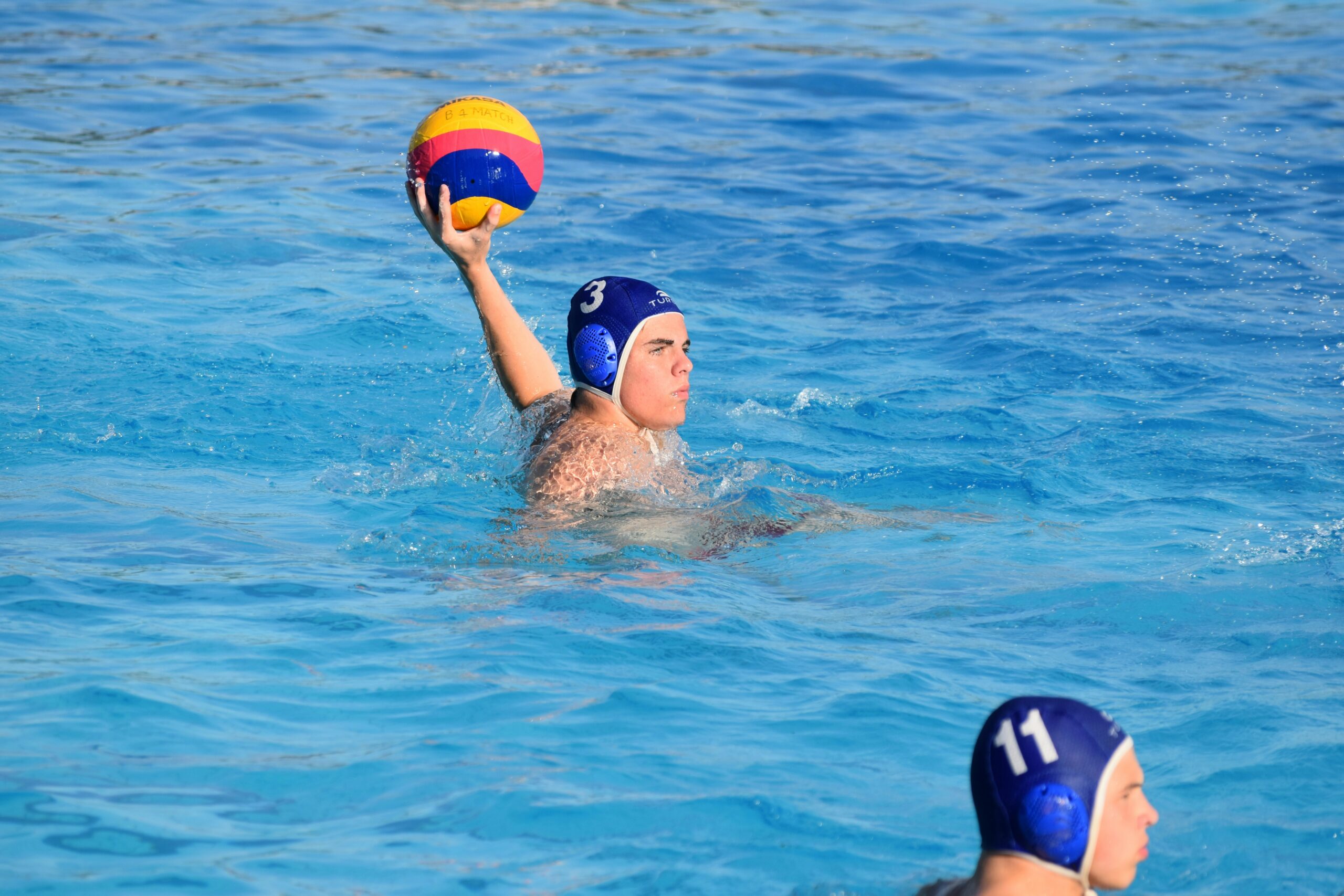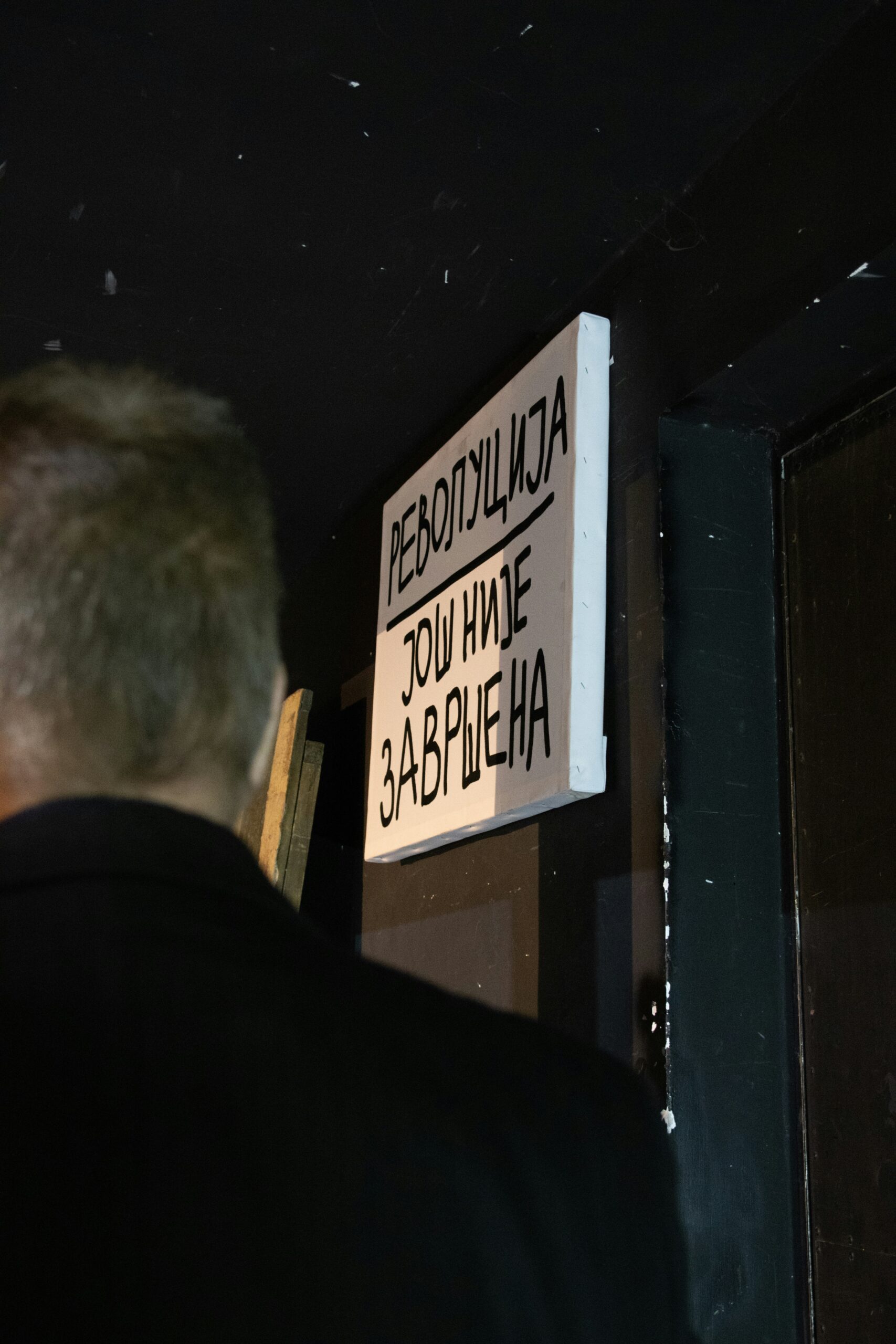Introduction to the 2025 Orebro School Shooting
The 2025 Orebro school shooting unfolded at the Jonkoping School, situated in the heart of Orebro, Sweden. This tragic event, occurring on a seemingly ordinary school day, captured national and international attention due to its severity and the implications for school safety protocols. The Jonkoping School, known for its focus on inclusivity and academic excellence, became the unfortunate backdrop for an incident that would profoundly impact the community and raise questions about the safety of educational institutions.
On the morning of the incident, students were attending their regular classes when a shooter entered the premises, leading to chaos and fear. The immediate response from local law enforcement was rapid, as police units were alerted within minutes of the situation escalating. Officers were deployed to the scene, prioritizing the evacuation of students and staff while attempting to neutralize the threat. This quick response was crucial in mitigating potential casualties and restoring order amid tumultuous scenes.
The repercussions of the event were felt not only within Orebro but across Sweden, prompting a nationwide dialogue about the factors contributing to school violence and the effectiveness of existing security measures. The stark realization that such incidents could occur even in idyllic settings led to increased scrutiny of mental health resources, community engagement, and educational environments. Families of victims, students, and educators began to voice their concerns, calling for reforms to ensure that schools remain safe havens for learning, free from the fear of violence.
As the nation grappled with the aftermath of the shooting, discussions around gun control, mental health care, and community intervention strategies became more pronounced, highlighting the need for a comprehensive approach to prevent future tragedies. This incident set the stage for ongoing debates regarding safety in education and the crucial role that society plays in safeguarding its younger generations.
Profile of the Suspect
The suspect in the 2025 Örebro school shooting has been identified as a 17-year-old male, who, prior to the tragedy, exhibited troubling behaviors that raised concerns among peers and educators. His age places him in the demographic group often associated with teenage angst and rebellion, yet the underlying motivations for his actions appear to stem from a more complex psychological profile. While the immediate cause of the shooting remains under investigation, early reports suggest that feelings of isolation and a desire for notoriety may have played significant roles in driving his motivations.
Psychological evaluations conducted in the aftermath revealed that the suspect had a troubled history, characterized by episodes of anxiety and depression. He was known to have struggled with social integration in school, frequently expressing discontent with his environment. Additionally, prior to the incident, he had been subjected to bullying, which seemingly intensified his feelings of alienation. Some of his classmates recounted instances where he openly discussed dark thoughts, raising alarms about his mental health long before the shooting occurred.
There are indications that the suspect engaged in online communities that glorified violence, suggesting possible affiliations with radical ideologies. This online engagement may have further exacerbated his mental health struggles, leading him to identify with extremist narratives that advocate for violent responses to perceived injustices. It is essential to analyze these affiliations critically, as they may have provided a distorted worldview that contributed to the tragic decision to carry out the shooting.
In reflecting on the profile of the suspect, it becomes evident that multidisciplinary approaches involving mental health support, bullying prevention, and community engagement are crucial in addressing the underlying issues that could lead to such violent acts. This incident serves as a reminder of the importance of recognizing warning signs and fostering an environment where students can seek help without stigma.
Timeline of the Events
On March 10, 2025, the Orebro school shooting began to unfold at approximately 9:15 AM when gunfire erupted within the premises of Orebro High School. Initial reports indicated that a shooter had entered the school, causing panic among students and faculty members. Within minutes, faculty members initiated lockdown procedures, alerting the local authorities and securing classrooms to protect students.
At around 9:30 AM, the first response teams from the Orebro Police Department were dispatched to the scene. The rapid response team faced challenges in gathering accurate information due to the chaos and limited communication. By 9:45 AM, law enforcement managed to secure the area surrounding the school, effectively isolating the incident.
As police arrived, students were reported to be hiding in various classrooms. After a careful assessment of the situation, the officers initiated negotiations with the suspect, who was believed to be a current student. Around 10:00 AM, the police successfully managed to evacuate a number of students and staff members from the school, guiding them to safety.
The first confirmed injuries were reported by 10:30 AM, resulting in immediate medical assistance being deployed. Simultaneously, the local hospitals were prepared for potential casualties. A press conference was held by law enforcement around noon, updating the community on the situation and the status of the operation.
By 12:45 PM, after hours of tense negotiations, the suspect surrendered to the police without further incident. The aftermath of the shooting left many in shock, prompting community leaders and mental health professionals to engage with affected families. Investigative efforts commenced to understand the motives behind the shooting, setting a foundation for discussions on school safety and mental health support in educational institutions. The tragic event would resonate within the Orebro community and beyond for an extended period, sparking conversations and policy considerations.
Impact on Victims and Families
The 2025 Örebro school shooting left an indelible mark on the lives of its victims and the families affected by the tragedy. For the survivors, the immediate aftermath was filled with confusion, fear, and trauma. Many students reported feelings of anxiety and helplessness, as the event shattered their sense of safety within an environment that is typically perceived as secure. Witness accounts reveal a blend of shock and disbelief as they navigated the chaos of the incident, struggling to comprehend how such violence could transpire in their community.
Emotional responses varied, with some victims exhibiting signs of post-traumatic stress disorder (PTSD), including flashbacks and severe anxiety. Parents of the affected students reported an overwhelming sense of helplessness, grappling with their inability to shield their children from such horrific experiences. The psychological impact extends beyond the immediate emotional responses; many families experienced long-term effects, leading to anxiety about returning to school and concerns for their children’s mental well-being.
In the greater context, families have sought to support one another within the community. Local support groups emerged, providing a space for victims and their relatives to share their experiences and feelings in a safe environment. This sense of solidarity has been invaluable, fostering an atmosphere where individuals can express their grief, fear, and anger. Mental health professionals have also played a critical role, offering counseling services aimed at helping families cope with loss, trauma, and the complexities of navigating life after the shooting.
As the community mourns and begins to heal, the ongoing dialogue surrounding the impact of the shooting emphasizes the need for robust support systems. These can mitigate the psychological impacts on victims and their families while promoting resilience and recovery in the face of such unparalleled tragedy.
Community and National Response
The 2025 Örebro school shooting prompted a profound and immediate reaction from both the local community and the broader Swedish society. In the aftermath of this tragic event, residents of Örebro organized public vigils to pay tribute to the victims and offer support to affected families. These gatherings not only provided a space for mourning but also served as a powerful reminder of communal solidarity in times of crisis. Participation in these vigils was extensive, reflecting a collective grief and a shared commitment to ensuring such incidents would not be repeated.
In parallel to these local initiatives, discussions around gun control intensified across Sweden. Advocates for stricter gun laws voiced their concerns regarding the accessibility of firearms and their role in incidents of violence. The Örebro school shooting reignited debates about the effectiveness of existing regulations and spurred citizens and lawmakers alike to consider new measures aimed at preventing future tragedies. This incident is seen by many as a critical juncture that highlights the need for comprehensive reforms in gun legislation.
Moreover, security measures in schools became a focal point of discussion. Educational authorities began to evaluate and enhance safety protocols, implementing new strategies to safeguard students and staff. This included increased training for teachers on emergency response procedures and the establishment of clear communication networks during such crises. The profound societal impact of this incident has underscored the importance of ensuring that educational environments remain safe and supportive.
Historically, events like the Örebro school shooting have significantly influenced social policies in Sweden. The nation’s response typically evolves to incorporate lessons learned from such tragedies, fostering a cultural shift toward prioritizing safety and prevention. Mobilization of community support and institutional change reflects a unity of purpose aimed at mitigating the risk of future violence in schools and society at large.
Media Coverage and Public Perception
The Orebro school shooting, occurring in 2025, sparked extensive media coverage that reflected a complex interplay between journalism and public perception. Various news outlets approached reporting on the incident with differing narratives, significantly shaping the discourse surrounding the tragedy. While some media emphasized the human impact and called for constructive dialogue on gun control and mental health, others leaned into sensationalism, focusing on graphic details and drawing attention to the perpetrator’s background.
This divergence in reporting styles has important implications for public perception. Sensationalized coverage can create a heightened sense of panic and fear within communities, often leading to misinformed discussions about safety and security measures in schools. Furthermore, such reporting may inadvertently glorify the assailant, elevating their notoriety rather than addressing underlying social issues that contributed to the act of violence. In contrast, responsible journalism that prioritizes facts and contextualizes the event can foster a more informed and empathetic public response.
Legislative Implications and Gun Control Debates
The tragic Orebro school shooting of 2025 has reignited robust discussions around legislative responses and gun control debates in Sweden. Following incidents of this nature, there is often a critical examination of existing laws governing firearm possession and distribution, emphasizing the need for enhanced safety measures within educational institutions. Stakeholders, including lawmakers, educators, and public safety officials, are increasingly focused on creating a comprehensive framework to prevent similar tragedies in the future.
In the wake of the shooting, Swedish legislators are considering a set of potential reforms that may include stricter background checks for prospective gun owners, limitations on magazine capacity, and additional requirements for mental health evaluations. These initiatives align with broader efforts observed internationally, where similar events have often catalyzed significant changes in gun control legislation. For instance, countries that have experienced school shootings frequently address public concerns by enacting tighter regulations governing firearms, underlining the societal imperative for safety in schools.
Moreover, discussions surrounding the effectiveness of current gun laws are being revisited. Proponents of stricter gun control argue that existing regulations may not adequately address the complexities surrounding illegal firearm access and the evolving methodologies employed by perpetrators. Concurrently, opponents often highlight issues related to civil liberties, advocating for the right to bear arms as essential to personal security. The competing perspectives reflect a cultural debate deeply rooted in historical responses to gun violence.
As legislative bodies explore these dimensions, there is a growing consensus on the need for a collaborative approach that involves community dialogue and evidence-based policymaking. The legislative implications of the Orebro shooting will undoubtedly shape Swedish discourse on gun control, paving the way for future strategies aimed at enhancing safety within schools and surrounding communities.
Lessons Learned and Future Prevention Strategies
The tragic Orebro school shooting serves as a somber reminder of the critical importance of preventive measures in educational environments. In analyzing this incident, several lessons emerge that could inform future strategies to mitigate the risk of similar events. One significant aspect is the need for comprehensive mental health support within schools. By creating a robust support system that includes counselors, psychologists, and accessible resources, educators and administrators can help address students’ emotional and psychological needs before they escalate into violence.
Additionally, implementing awareness and education programs is crucial in fostering a culture of inclusivity and understanding. These programs should focus on identifying early warning signs of distress or potential violence among students. Training for both staff and students in recognizing these signs can lead to timely interventions and create an environment where individuals feel safe reporting concerns. Promoting open communication among all school members reduces stigma and encourages peer support, which is fundamental in preventing violent outbursts.
Moreover, security enhancements are necessary to maintain a safe learning environment. This can include conducting regular drills for emergency situations, establishing secure entry points, and utilizing surveillance systems. Such measures, when combined with an engaged and trained staff, can serve as deterrents and improve response times in potential crisis situations. A multifaceted approach that integrates mental health initiatives, education programs, and security improvements not only addresses the complexities of youth violence but also fosters a supportive community in which students can thrive.
Effective prevention requires collaboration among school officials, mental health professionals, law enforcement, and the community. Continual assessment and adaptation of strategies based on emerging patterns and research findings will be essential in shaping a safer educational landscape for future generations.
Conclusion: Moving Forward as a Society
The tragic events surrounding the 2025 Orebro school shooting have left deep scars within the community and beyond, prompting a critical examination of the societal structures that contribute to such violence. In light of this incident, it is paramount for society to foster resilience within communities, encouraging collective efforts to ensure safety in educational settings. A resilient community actively supports its members, creating an environment where individuals feel valued and protected.
Moreover, the necessity of open dialogues about safety cannot be overstated. Engaging various stakeholders—parents, educators, law enforcement, and students—in conversations about violence prevention and crisis management is essential for cultivating a proactive rather than reactive approach. Such dialogues should aim not only to address the immediate concerns following a tragedy but also to promote long-term strategies that prioritize mental health and well-being within schools. Mental health resources are critical in assisting individuals who may struggle with their emotions and actions, potentially stopping violent incidents before they occur.
Furthermore, a commitment to understanding the nuances of school safety extends beyond reactive measures. It encapsulates the responsibility of policymakers to craft legislation that addresses the root causes of violence. This includes investing in community programs, educational workshops, and support systems that empower individuals, especially youth, to express their concerns and seek help without stigma. Collaboration among various sectors can aid in developing comprehensive safety frameworks that consider the multifaceted nature of these incidents.
In conclusion, the 2025 Orebro school shooting serves as a poignant reminder of the fragility of safe educational environments. Therefore, it is imperative for society to engage in sustained efforts that promote resilience, foster open communication about safety, and cultivate a responsible, collaborative approach to preventing future tragedies. Only through collective engagement can we hope to create an educational landscape that prioritizes the security and well-being of every student.


